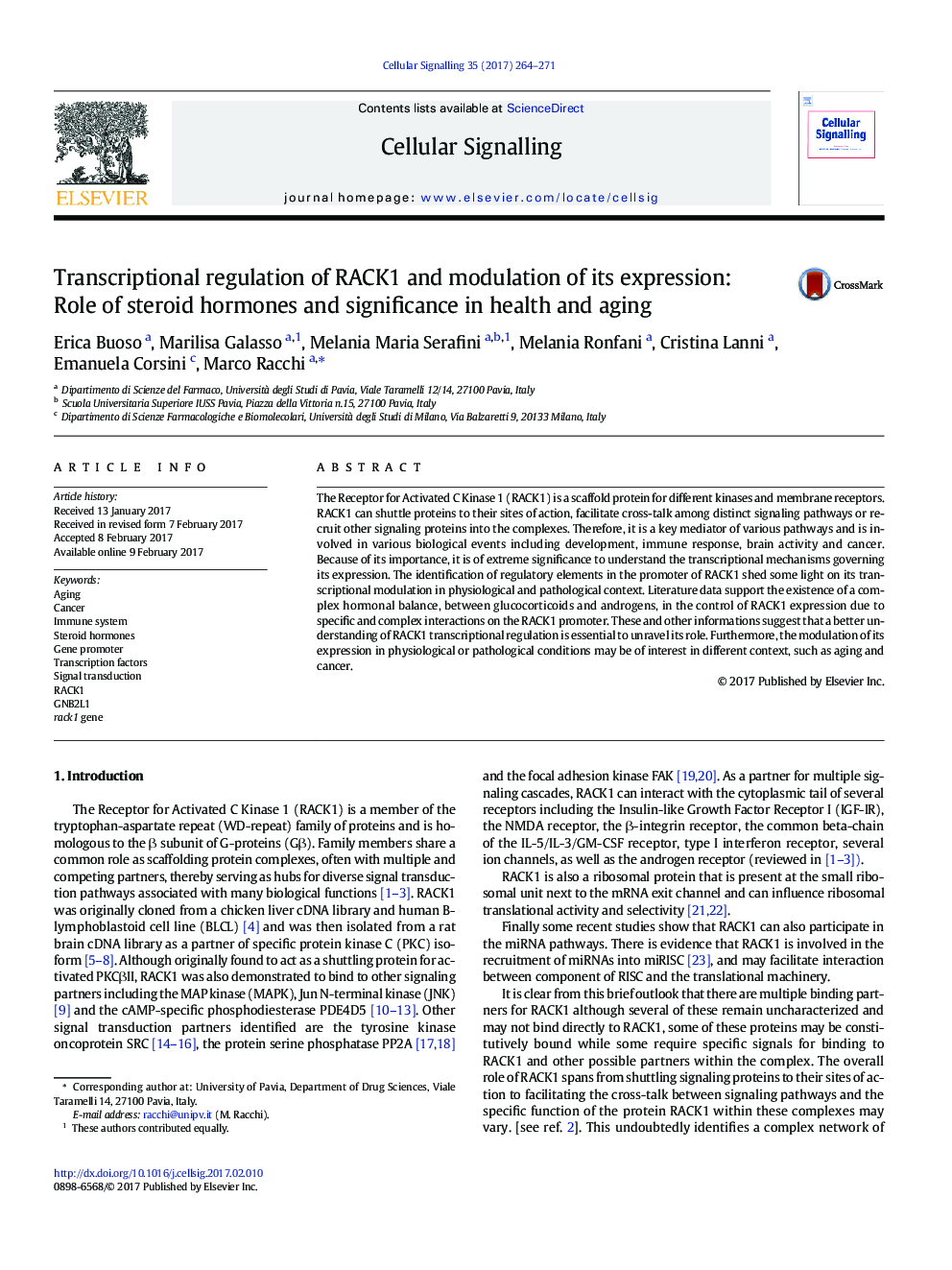| Article ID | Journal | Published Year | Pages | File Type |
|---|---|---|---|---|
| 5509303 | Cellular Signalling | 2017 | 8 Pages |
â¢RACK1 appears to be a fulcrum of cellular homeostasis, controlling essential cellular processes.â¢RACK1 can modulate transcription, translation, cell proliferation, cell spreading and cell-cell interactions.â¢Experimental analysis of the transcriptional control of RACK1 expression is still limited.â¢Two major elements control RACK1 expression: the NF-κB pathway and the glucocorticoids/androgen receptors.â¢Understanding the mechanisms of RACK1 expression is important in physipathological conditions in which RACK1 is central.
The Receptor for Activated C Kinase 1 (RACK1) is a scaffold protein for different kinases and membrane receptors. RACK1 can shuttle proteins to their sites of action, facilitate cross-talk among distinct signaling pathways or recruit other signaling proteins into the complexes. Therefore, it is a key mediator of various pathways and is involved in various biological events including development, immune response, brain activity and cancer. Because of its importance, it is of extreme significance to understand the transcriptional mechanisms governing its expression. The identification of regulatory elements in the promoter of RACK1 shed some light on its transcriptional modulation in physiological and pathological context. Literature data support the existence of a complex hormonal balance, between glucocorticoids and androgens, in the control of RACK1 expression due to specific and complex interactions on the RACK1 promoter. These and other informations suggest that a better understanding of RACK1 transcriptional regulation is essential to unravel its role. Furthermore, the modulation of its expression in physiological or pathological conditions may be of interest in different context, such as aging and cancer.
